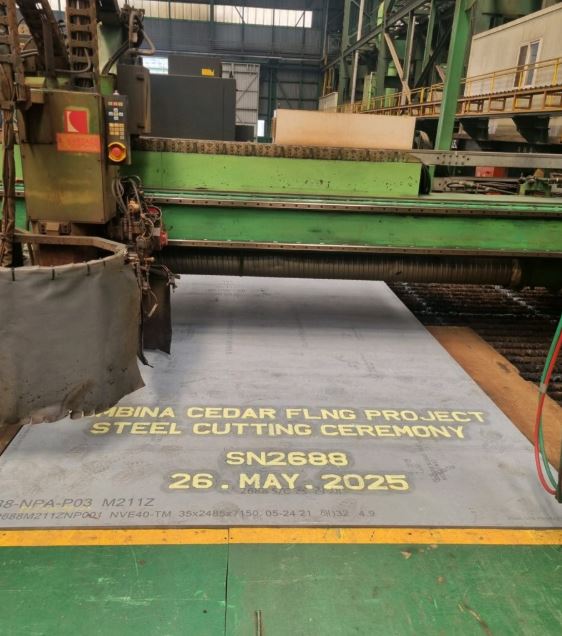 Last week at the Samsung Heavy Industries shipyard in Geoje, South Korea, fabrication officially began on the floating LNG vessel for Cedar LNG, according to Cedar's release.
Last week at the Samsung Heavy Industries shipyard in Geoje, South Korea, fabrication officially began on the floating LNG vessel for Cedar LNG, according to Cedar's release.
While the overall design continues, key structural elements are now being assembled.
Once complete, the vessel will be transported to Haisla Nation territory near Kitimat, British Columbia, enabling Indigenous-led LNG export from Canada.
Chief Councillor Crystal Smith commented, “To see the floating LNG vessel start to take shape is so incredible. In just a few short years, the vessel will arrive on our shores where it will serve as a reminder of what can be done when Indigenous Nations are given a share and a say in how our resources are used for the benefit of our people and the environment.”
Haisla Nation’s sustainability values, shared by partner Pembina Pipeline Corporation, guided the choice of a floating facility to minimize environmental impact.
Craig Day, Project Director of Cedar LNG, said, “This is an exciting moment for Cedar LNG as it represents the official start of construction on what will be an innovative, worldŌĆæclass, lowerŌĆæcarbon floating LNG facility. This achievement reflects the extensive planning efforts of our partners – Haisla Nation and Pembina Pipeline – our project team, and Samsung Heavy Industries and Black & Veatch.”
The vessel is expected to be completed in 2028, ahead of Cedar LNG’s anticipated in-service date in late 2028.
Cedar LNG is a joint venture between the Haisla Nation (50.1%) and Pembina Pipeline Corporation (49.9%). It is developing Canada’s first Floating Liquefied Natural Gas (FLNG) facility near Kitimat, British Columbia, powered by hydroelectricity. A final investment decision was taken in June 2024 for the roughly USŌĆ»$4ŌĆ»billion project with a capacity of 3.3ŌĆ»million tonnes per annum (mtpa).
Samsung Heavy Industries (SHI), based in Geoje, South Korea, is one of the world’s largest shipbuilding firms.



